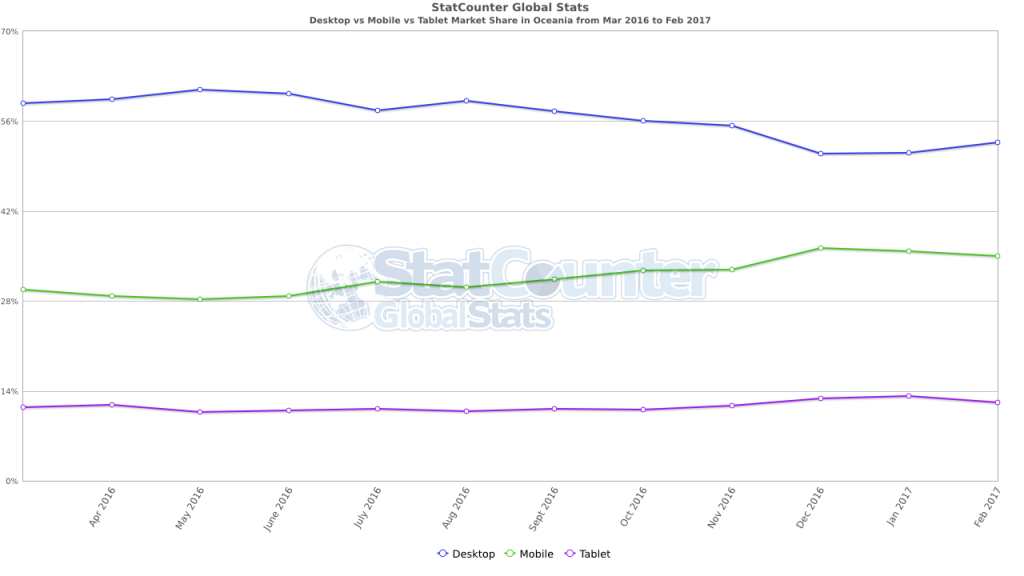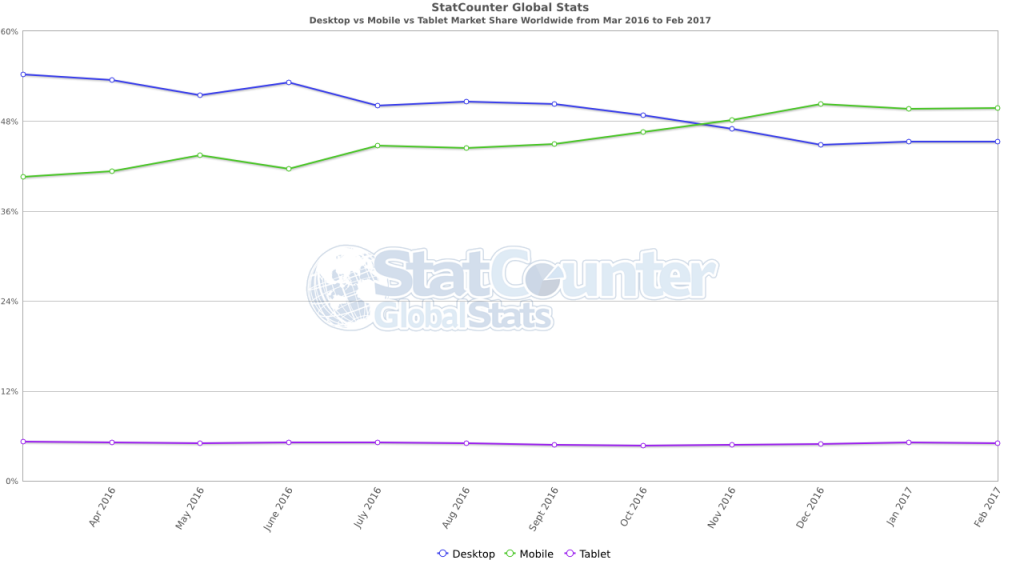There is always something to think about these days when presenting your business to the online world… SEO, blogs, branding, content strategy… the list goes on. But if there is just the one place to start, the one thing that will bring everything down in search engine land, it’s this… is your website optimised for mobile?
In April 2015 Google announced an algorithm update which quickly became known as “Mobilegeddon”. In short speak it means that if you have a non-mobile friendly website then Google will start penalising you.
If you need any extra incentive as to how important this is, the latest data tells us that desktop browsing in Oceania has dropped around 6% in the last year alone, with mobile picking up nearly all of that in gain. Mobile devices (phone plus tablet) now make up over 47% of ALL browsing.
If we take International numbers into account then smart phone alone makes up 49.73%. If you add in tablets a whopping 54.77% of all browsing is being done on mobile.
So what do we do then if we don’t have a mobile optimised site? In simple terms… get one. It doesn’t have to be expensive or hard, but it does need to be done.
Responsive vs Dedicated Mobile Sites
There are effectively two main types of mobile site structures – Responsive and Dedicated Mobile.
Many Small to Medium sized businesses (SME’s) use website building platforms such as Wix and SquareSpace, or buy templates that you use with WordPress or Joomla, and most of these will provide you a responsive solution out of the box. If they don’t, then I would recommend to stay well clear.
Dedicated mobile sites are those sites that you see with an m. before the standard URL. My site is responsive, however if I had a dedicated version it would look like this – m.yourviewmarketing.com.au
There are benefits to both ways of doing this… however for SME’s responsive is generally more cost effective, as you are not developing what is effectively a second site, and easier as you don’t have to maintain both sites. It will simply adapt to whatever device your customer is using, and ensure your site’s content is delivered in the appropriate size and format (making Google a happy little search engine).
Bringing us back to Google again…
If you are unsure if your site is mobile friendly, they have provided a handy little tool to get you started. Simply type your URL into this page and voila!
https://search.google.com/search-console/mobile-friendly
I can’t tell you how important it is to have a mobile optimisation strategy that not only Google likes, but gives your customer a great mobile experience. Think about your own user experience when browsing other websites on your phone. What are your frustrations? Would your site give those same frustrations to your customers?


